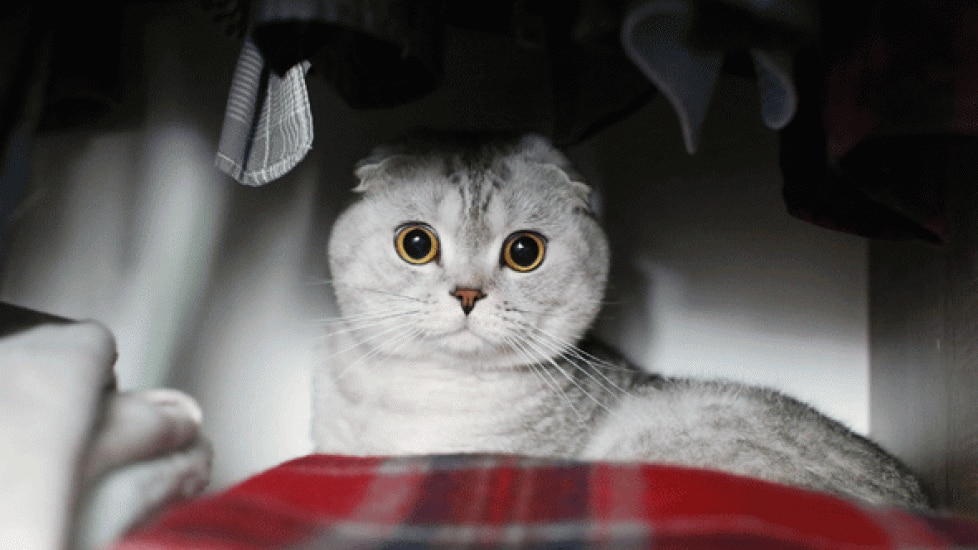Mothball Toxicity in Pets: What You Need to Know
by Jennifer Coates, DVM
The incidence of mothball poisoning in pets is quite low — 158 cases were reported to the ASPCA Animal Poison Control Center (APCC) between 2002 and 2004. But that becomes irrelevant when it’s your pet who has become sick.
According to the APCC, most of these cases involve a pet eating a mothball, but problems can also arise when they are exposed to the fumes that mothballs produce or when their skin comes in contact with them. If you have mothballs in your home, you need to know what makes them toxic and what to do if your pet comes into contact with them.
Different Kinds of Mothballs, Different Toxic Reactions
First of all, mothballs are not all the same. They can contain two different active ingredients: naphthalene or paradichlorobenzene (p-dichlorobenzene). These two chemicals are also available as flakes, cakes, and crystals, in addition to mothballs. In whatever form, naphthalene is about twice as toxic as paradichlorobenzene, which means that a pet can eat approximately twice as much paradichlorobenzene before death occurs. Therefore, if you’re going to buy mothballs, look for ones made from paradichlorobenzene.
The symptoms of naphthalene and paradichlorobenzene toxicity are different too. After being eaten, naphthalene first affects the gastrointestinal system, causing vomiting and poor appetite, but problems don’t stop there. Naphthalene also damages a pet’s red blood cells and can lead to anemia, brown colored mucous membranes, weakness, lethargy, and sometimes seizures. Cataracts and liver damage are possible as well. Naphthalene can also be absorbed through the skin and lungs, but the most severe problems develop after ingestion.
Pets who eat paradichlorobenzene may also vomit, but then tend to have symptoms associated with dysfunction of the nervous system, including disorientation, tremors, difficulty walking, drooling, depression, and seizures. Cataracts and liver damage may develop too. In rare cases, red blood cell damage and anemia are possible. Skin contact with paradichlorobenzene can result in a burning sensation and local irritation.
The fumes produced by both naphthalene and paradichlorobenzene can be very irritating to the nose, eyes and lungs. Pets who are around mothball fumes may develop red, runny eyes, a runny nose, sneezing, and/or coughing.
Cats are more sensitive to mothballs than are dogs, and other species can become sick after exposure as well. For example, veterinarians have reported several instances of birds developing symptoms like lethargy, weakness, and difficulty breathing after inhaling fumes from mothballs. At least one bird died as a result.
What to Do if Your Pet is Poisoned by Mothballs
Clearly the best way to protect pets from naphthalene and paradichlorobenzene is to keep them away from mothballs (far away if we’re talking about a bird). But sometimes, despite our best efforts, animals do get exposed. What should a pet parent do then?
Eating one naphthalene mothball is enough to make cats and small dogs very sick so this is not a situation to be ignored. If you suspect that your pet has eaten a mothball (or been exposed by another route), call your veterinarian immediately. It may be possible to get your pet to vomit up the mothball if they have eaten it in the last couple of hours.
Depending on your pet’s condition and how far away you are from the clinic, your veterinarian may recommend that you induce vomiting at home or that you bring your pet in for the procedure. In either case, unless you and your vet are certain that your pet has no more naphthalene or paradichlorobenzene in its system, further treatment will be necessary. This may include gastric lavage (washing out the stomach), administration of activated charcoal, or fluid therapy and drugs to limit vomiting, seizures, and damage to the liver and gastrointestinal tract. If the results of blood work show that your pet has anemia, a blood transfusion and medications that protect red blood cells may also be needed.
What Kind of Mothball Did Your Pet Ingest?
Since treatment can vary depending on whether the mothballs were made with naphthalene or paradichlorobenzene, if you are unsure about what type of chemical is in the mothball your pet may have eaten, a neat trick can help you and your veterinarian figure out how to proceed.
- Add 3-4 tablespoons of table salt to a half cup of lukewarm water.
- Mix thoroughly and add additional salt if necessary until no more salt will dissolve.
- Add a representative mothball to the solution.
- Naphthalene mothballs will float and paradichlorobenzene mothballs will sink.
Reference
Moth Repellent Toxicosis. Camille DeClementi. Vet Med. January 2005;100(1):24-28.
Read More
Help us make PetMD better
Was this article helpful?
